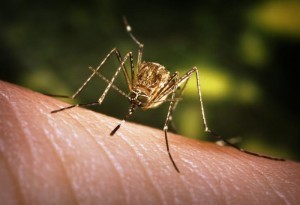PIERRE, S.D. –A Hughes County resident is South Dakota’s first human West Nile virus (WNV) detection of the season, the state Health Department reported today. The person is in the 20 to 29 age group and was not hospitalized.

“Since West Nile is now active in South Dakota, people need to protect themselves, especially during evening outdoor activities, such as sporting events and camping,” said Dr. Lon Kightlinger, state epidemiologist for the department.
The department recommends the following personal precautions to prevent mosquito bites and reduce the risk of WNV:
- Use mosquito repellents (DEET, picaridin, oil of lemon eucalyptus or IR3535) and limit exposure by wearing pants and long sleeves in the evening.
- Limit time outdoors from dusk to midnight when Culex mosquitoes are most active.Culex are the primary carrier of WNV in South Dakota.
- Get rid of standing water that gives mosquitoes a place to breed. Regularly change water in bird baths, outside pet dishes, and drain water from other flower pots and garden containers.
- Support local mosquito control efforts.
Personal precautions are especially important for those at high risk for WNV – people over 50, pregnant women, transplant patients, individuals with diabetes or high blood pressure, and those with a history of alcohol abuse. People with severe or unusual headaches should see their physicians.
Peak transmission in South Dakota is from July through early September, but WNV cases can also occur earlier. Since its first human WNV case in 2002, the state has reported more than 2,000 human cases, including 32 deaths.

